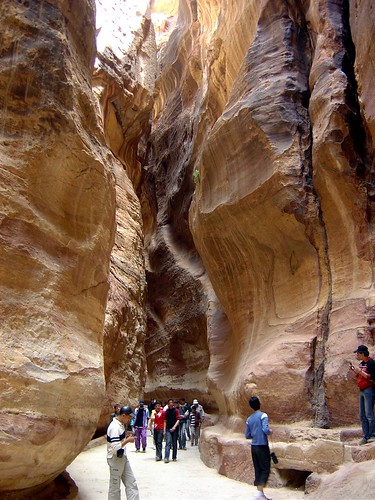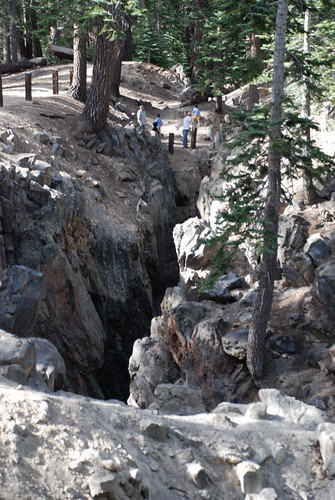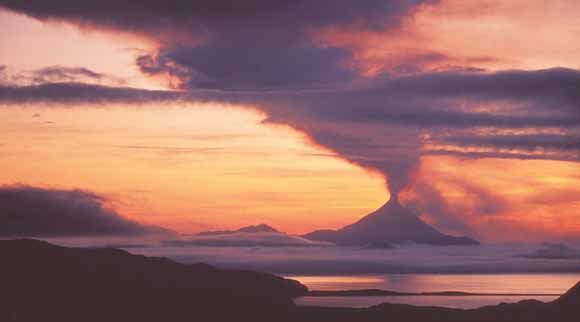
Many faults and a few mostly modest quakes have long been known around New York City, but the research casts them in a new light. The scientists say the insight comes from sophisticated analysis of past quakes, plus 34 years of new data on tremors, most of them perceptible only by modern seismic instruments. The evidence charts unseen but potentially powerful structures whose layout and dynamics are only now coming clearer, say the scientists. [snip] The researchers found concrete evidence for one significant previously unknown structure: an active seismic zone running at least 25 miles from Stamford, Conn., to the Hudson Valley town of Peekskill, N.Y., where it passes less than a mile north of the Indian Point nuclear power plant. The Stamford-Peekskill line stands out sharply on the researchers' earthquake map, with small events clustered along its length, and to its immediate southwest.

Unless you're a fan of disaster flicks, "New York City" and "earthquake" probably don't occur to you in the same sentence frequently. But the Earth is full o' faults. They pop up in rather surprising places, like the center of the United States, and do astonishing things, like make the Mississippi River flow backwards for a time. Seriously, it happened.
When we think of earthquakes, I think most of us think of the devastation. We don't really think so much about what earthquakes are telling us about how our world works. And we don't think about their landscaping skills. They're really fascinating things, especially if you don't have to worry much about being hit by one.
Let's have a look at where that's likely to be.
 If you know anything about plate tectonics, you're noticing a pattern about now: earthquakes mark out the boundaries of the plates pretty well. And the types of earthquakes tell us a lot about the type of boundary we're seeing. For instance, shallow-depth, low-intensity earthquakes occur at mid-ocean ridges, while areas demonstrating a continuum of shallow, intermediate or deep quakes - a Wadati-Benioff zone - shows us we've got a subduction zone.
If you know anything about plate tectonics, you're noticing a pattern about now: earthquakes mark out the boundaries of the plates pretty well. And the types of earthquakes tell us a lot about the type of boundary we're seeing. For instance, shallow-depth, low-intensity earthquakes occur at mid-ocean ridges, while areas demonstrating a continuum of shallow, intermediate or deep quakes - a Wadati-Benioff zone - shows us we've got a subduction zone.
Earthquakes have taught us things as diverse as what the interior of the world might look like and whether some absolute bastard's exploded a nuclear bomb on the sly. That's because you can learn a lot from a seismic wave. Different types of waves travel differently depending on what caused them and what they're traveling through:
Seismic Waves
The mechanical properties of the rocks that seismic waves travel through quickly organize the waves into two types. Compressional waves, also known as primary or P waves, travel fastest, at speeds between 1.5 and 8 kilometers per second in the Earth's crust. Shear waves, also known as secondary or S waves, travel more slowly, usually at 60% to 70% of the speed of P waves.
P waves shake the ground in the direction they are propagating, while S waves shake perpendicularly or transverse to the direction of propagation.
All of this is fascinating and informative stuff, but it may not have a personal meaning for you. Unless you live in volcano country, that is. If that's the case, harmonic tremors become your dearest friends. Harmonic tremors alert scientists to the movement of magma beneath a volcano, and a swarm of them lets you know that it's maybe kinda sorta time to run like hell.
This is good information to have when you live next to a volcano.
Earthquakes don't just destroy and warn: they sculpt. Some pretty amazing landscapes have been created by them.
On our left, we have a canyon in Jordan created by water eroding an earthquake fissure.

And to our right, an earthquake fissure in California that, with enough time and running water, could become a rather spectacular gorge.

Here's Earthquake Lake in Montana, created one day in 1959 when an earthquake triggered a landslide that formed a natural dam. Bet you the beavers were jealous.
I hope this whirlwind tour of earthquakes has given you at least some sense that they do far more than just make things shake and knock cities down. They're pretty fantastic things, quite useful, and even wonderful. As long as you don't have to meet one in person... good luck on that, New York.








3 comments:
What a delightful overview of earthquakes. You managed to package a lot of information in a very readable style, without sensationalism. It's also very simplified without being inaccurate, something that scientists find extraordinarily difficult to write. We know too many details, too intimately. Have you ever considered popular science writing?
Oh, and I simply HAVE to throw this in...
Background: I'm a Masters student at a state university, studying geology. I'm at the thesis-writing stage, close to finishing. I've also been here a long time, because I'm in my late forties and did most of my classwork part-time, since taking care of elderly parents during their final illnesses was top job for most of my school time.
At this particular school, at least, very few of our MS grad students studied geology as undergraduates. Most of us originally chose another path in life, and found ourselves curious about and drawn to earth science, and not completely happy with our first choices. I was an engineer; my classmates include people who were formerly a biologist, an actuary, a soil scientist, a professional musician... etc. (To be fair, we do have a couple of geologists come through the program every year. We hardly ever see them; a couple of semesters of classes, a thesis, and they're gone. Blink twice from the first introduction, and we're toasting their announcement of finding a job.)
At my school, our undergraduate crew is frequently enhanced by someone in another major who takes a geology-for-non-majors class to fulfill some general education requirement, falls in love with the field, and changes their major.
So beware: too much exposure to earth science, and you can find yourself studying a field where the science is fascinating, you don't need a PhD to succeed in it, and there are well-paying jobs to support those who moonlight as writers.
But also beware: if you bring tequila into the field, you'll have far too many colleagues willing to share it with you. :-)
nice one
Post a Comment